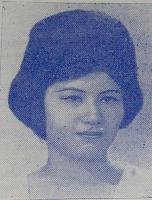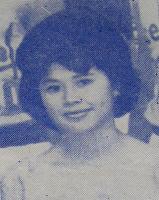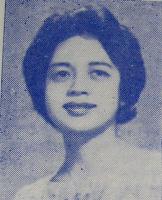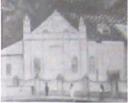Boboy and Danao’s thunder things
April 24, 2007
By Karlon N. Rama
Stage Five
SunStar-Cebu
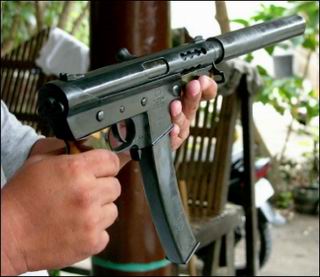 LAST week’s piece on the nineteen-eleven earned an email from Mr. Ramon “Boboy” Durano IV (boboy_rd @yahoo.com), former city administrator, vice mayor and councilor of Danao City. I emailed him back and asked about the treasure trove of firearms and firearm-history that he calls his hometown. His reply deserves to see print.
LAST week’s piece on the nineteen-eleven earned an email from Mr. Ramon “Boboy” Durano IV (boboy_rd @yahoo.com), former city administrator, vice mayor and councilor of Danao City. I emailed him back and asked about the treasure trove of firearms and firearm-history that he calls his hometown. His reply deserves to see print.
“Based on my little research, the gun industry in Danao started around 1905-1906 and one of the most popular gun maker at that time was a certain Mario Durano. I don’t know how he is related to us.
“I have a piece that was supposedly made by him in 1912. It is a revolver chambered for cal. 32, made out of bronze and patterned after the revolvers used either by the Spaniards or the early batch of American soldiers sent out to fight Aguinaldo. Gun making was then considered as a backyard industry, of course, and outlawed by the government.
“When World War II came, the Danao gunsmiths went underground, joined the guerrilla movement or were inducted into the USAFFE under the command of Gen. Douglas McArthur.
“Their task was to re-chamber the Japanese Arisaka rifles to fit the US cal.30 round or kept the original Japanese rifle in good serviceable shape for the use of our forces.
“After the war, there was a lull because of the proliferation of US surplus goods, among them firearms.
“The industry went on, still underground. Until the ’60s, somebody coined the word ‘paltik’ to the guns. The brand made it popular and, being synonymous to Danao, people now began to realize that there was something, a special skill, that is embedded in the Danao gunsmiths.
A REAL WAR HERO, COL. ALEJANDRO ALMENDRAS: MILITARY STRATEGIST
May 9, 2006
(Editor’s Note: While browsing some reading materials at the Cebuano Studies Center of the University of San Carlos during a visit to the USC Library in Cebu – I came across an old book – THE CEBU PATRIOTS IN ACTION – published in 1946 and authored by Cayetano Villamor, a guerrilla officer during the war. Only two Danawanons were featured and considered war heroes and patriots. A lesser known Danawanon hailed as a valiant war hero was a certain Capt. Agripino Casia. He died in combat bravely fighting against the Japanese invaders.
While in Danao Elementary School I never heard about these two Danawanon patriots who fought bravely against the Japanese. Their names were never mentioned by our History teachers. And sadly, not a street, not even a tree has been named in their memory. Monching)
**************
Colonel Alejandro Almendras, A Military Strategist
by: Cayetano Villamor, author, “The Cebu Patriots in Action”, published 1946.
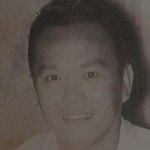
Times change and the hearts of men change with them. The statement is absolutely correct.
But I propose to make an exception. With greatest confidence and with an enormous lift of my heart I can forcefully state that our people sincerely believe our recent resistance against Japan will always remain a glorious chapter of our country’s history.
There should be no controversy on this point. You and I cannot quarrel with Fate and cannot successfully rise against posterity’s verdict.
It is therefore fitting and proper that honor, pride and glory, in fact, everything that is best and sacred in our people be given the patriots. Their sacrifices and miseries gladly undertaken because they love their country readily found responsive echoes in our hearts.
This is precisely the reason why I always greet with respect and appreciation Lieutenant Colonel Alejandro D. Almendras, a brilliant mind, a forceful and persuasive character.
During the most perilous years of our national existence this dashing and energetic leader cheerfully defended his country and its institutions.
WORLD WAR II HERO: CAPT. AGRIPINO CASIA OF DANAO
April 29, 2005
(Editor’s Note: While browsing some reading materials at the Cebuano Studies Center of the University of San Carlos during my recent visit – I came across an old book – THE CEBU PATRIOTS IN ACTION – published in 1946 and authored by Cayetano Villamor, a guerrilla officer during the war. Only two Danawanons were written about and cited as war heroes. Prominently featured in a more lengthy article was Col. Alejandro Almendras, described as a great military strategist. A lesser known Danawanon hailed as a war hero was a certain Capt. Agripino Casia. He died in combat bravely fighting against the Japanese invaders. I never heard of him until a week ago while visiting the USC Library and opening a book that was nearly disintegrating.)
 The late Captain Agripino D. Casia, 36 years old and married was a resident of Danao, Cebu and was a teacher by profession. He was a Normal School graduate.
The late Captain Agripino D. Casia, 36 years old and married was a resident of Danao, Cebu and was a teacher by profession. He was a Normal School graduate.
He underwent the two-month teachers’ trainee instruction in 1938. Then he became the Commandant of the pre-military training in Compostela Elementary School from 1936 to 1941.
He became a Probationary Third Lieutenant. He also attended the Reserve Officers’ Training School at Canlubang, Laguna, in 1940. In 1941 while at Camp Lapulapu he was the commanding officer of the combat company.
Miss Danao 1964
August 14, 2004
Forty years ago, they were Danao’s Prettiest who vied for the most coveted title of Miss Danao.
Who are they?
Anyone who can identify all three will be conferred the title of Miss or Mr. Danao 2004 to be crowned during the Balik Danao Night. For a clue click “Read More”.
The Hundred Years of Democratic Government and System of Education in Danao City
April 17, 2004
Researched by:
Narciso “Sisoy” Almerez
Danao City, Cebu
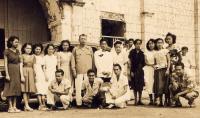 The American soldiers came to Danao on August, 1900 with Gen. Lawton as the commanding officer.
The American soldiers came to Danao on August, 1900 with Gen. Lawton as the commanding officer.
They had an encounter with the Danawanon soldiers, but because of their superior weapons the soldiers and the civilians including their families fled to hinterlands to spare their life. Danawanons felt a reign of terror.
The leader of the resistance movement in Danao, Capitan Candelario M. Cuizon fled to Hagnaya in his farm. The American officer ordered to demolish the big residential house of Tan Dayong in the corner of now C.M. Enriquez and B. D. Durano streets.
A wedding in old Danao
His big sugar plantation, his big Camalig Bato or bodega of muscuvado sugar in Taboc and several sugar mills were set on fire by the American soldiers. Because of the destruction of his properties and business he came down to the Poblacion and pledged allegiance to the American government.
Capitan Victorino C. Buot, the Presidente Popular of Danao at that time was captured and put to jail in Fort San Pedro, Cebu City. He was forced to swear allegiance to the American government.
Read more
DAUSA Turns 10, Projects Continue
September 3, 2003
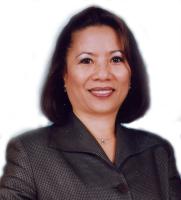 The Danao Association USA, Inc. is barely ten years old, yet has already been known in the Filipino communities all over U.S. as among a handful of very active, if not the number one hometown association that consistently help its people back home.
The Danao Association USA, Inc. is barely ten years old, yet has already been known in the Filipino communities all over U.S. as among a handful of very active, if not the number one hometown association that consistently help its people back home.
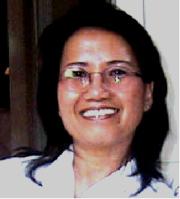 Formally organized in September 1993 by a small group of Danawanons, DAUSA has gone a long way from just holding a pot-luck during the feast of the town’s patron saint, to conducting an annual medical- surgical mission, free dental clinic, adopt-a-student, adopt-a-school programs and forming Little Leagues.
Formally organized in September 1993 by a small group of Danawanons, DAUSA has gone a long way from just holding a pot-luck during the feast of the town’s patron saint, to conducting an annual medical- surgical mission, free dental clinic, adopt-a-student, adopt-a-school programs and forming Little Leagues.
Gemma Montegrande, DAUSA President
Crosine Roble was elected first president in 1993; next was. Dr. Plutarco Almendras in 1995. Ramon Barriga was president in 1997 and served the allowed maximum two terms until 2001. Crosine Roble.
Danao Parish Church Through the Years
March 22, 2003
Researched and Compiled by Narciso ‘Sisoy’ Almerez
• In 1755 the parish church was constructed by the Venerable Padre Fray Manuel de Santa Barbara, the Vicario Prior of Danao in its present site.
• The San Alipio bell was cast in 1845 which now hung in the bell tower (45 kilos).
• The crucero (right and left wing of the church and the beautiful stone fence that surrounded the church were constructed by Padre Manuel Fernandez de la Virgen del Rosario, parish priest in 1843 to 1867.


